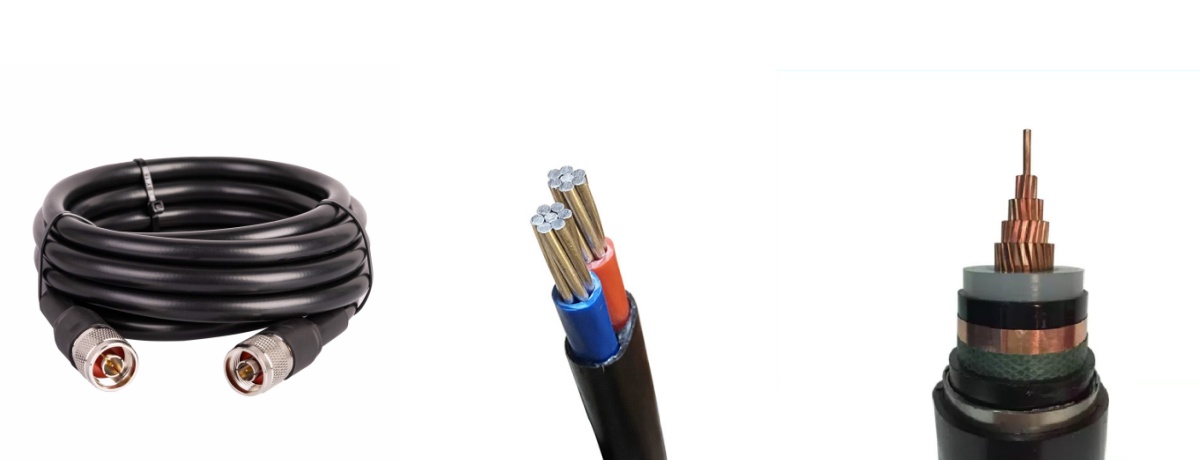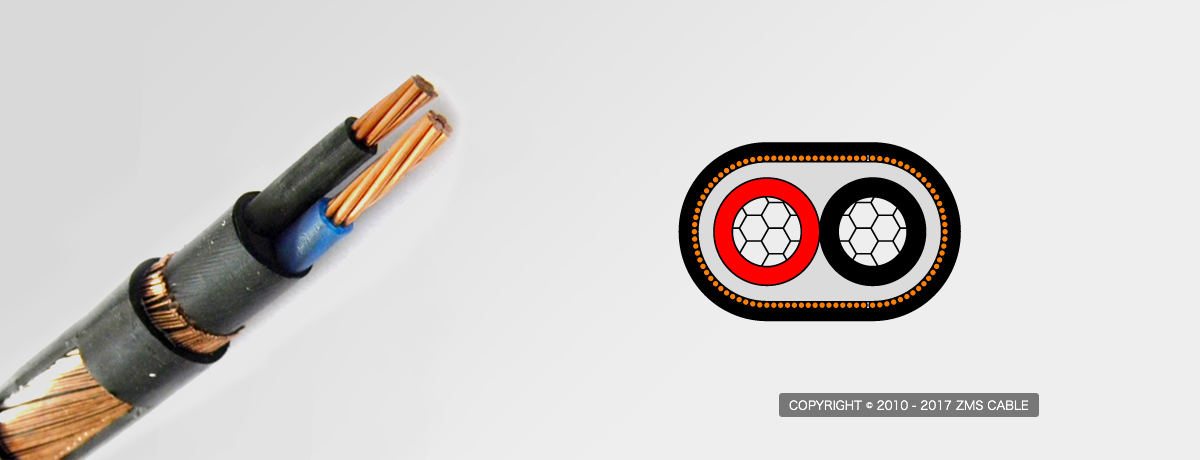The cable industry has evolved significantly to meet the diverse needs of modern electrical and communication systems.
Among the many cable types, concentric cables, coaxial cables, and single-core cables each have distinct characteristics, structures, and applications. In this article, we’ll explore the key differences between these cable types, focusing on their construction, functionality, and areas of use.

Concentric cables are specialized types of electrical cables characterized by their unique structure. These cables consist of a central conductor, usually made of copper or aluminum, surrounded by multiple layers of insulation and conductors arranged concentrically.
Multiple Conductors:
The core conductor is enclosed by one or more layers of conductive material, which can serve as neutral conductors or protective earth.
Durable Insulation:
High-grade insulation materials protect against environmental factors such as moisture and physical damage.
High Fault Tolerance:
The concentric arrangement allows for better fault detection and enhanced safety.
Widely used in power distribution systems.
Suitable for underground and outdoor installations due to their excellent durability and resistance to interference.
Commonly found in metered power connections and industrial settings.
Coaxial cables are widely recognized for their role in telecommunications and data transmission. These cables consist of a central conductor, an insulating layer, a metallic shield, and an outer jacket.
Precise Signal Transmission:
The shielded design minimizes signal loss and electromagnetic interference (EMI).
Layered Structure:
The core conductor (copper or aluminum) transmits signals, while the shield prevents external noise from interfering.
Versatility:
Coaxial cables are available in various grades for different bandwidth and distance requirements.
Used in cable television (CATV) systems and internet connectivity.
Essential for connecting satellite dishes to receivers.
Integral in radio and military communication systems.
Single-core cables are the simplest type of cable, consisting of a single conductor enclosed within an insulating material. They are straightforward in design and widely used in low to medium-voltage applications.
Simple Construction:
A single conductor, typically made of copper or aluminum, is surrounded by a layer of insulation.
Flexible and Lightweight:
Their simplicity makes them lightweight and easy to install.
Low Cost:
Cost-effective compared to multi-core or more complex cables.
Common in household wiring for power distribution.
Used in small appliances and automotive systems.
Suitable for indoor installations where flexibility and simplicity are needed.
| Cable Type | Core Conductor | Additional Layers | Shielding |
|---|---|---|---|
| Concentric | Single core surrounded by concentric conductors | Multiple insulation layers and conductors | Partial shielding |
| Coaxial | Single core | Insulation, metallic shield, and jacket | Full shielding |
| Single Core | Single core | Insulation | No shielding |
| Aspect | Concentric Cables | Coaxial Cables | Single Core Cables |
|---|---|---|---|
| Purpose | Electrical power distribution | Signal transmission | Basic wiring tasks |
| Interference Protection | Moderate | High | Low |
| Fault Detection | High | Moderate | Low |
| Field | Concentric Cables | Coaxial Cables | Single Core Cables |
|---|---|---|---|
| Power Systems | Widely used | Rare | Common |
| Telecommunications | Rare | Widely used | Rare |
| Industrial Uses | Frequently used | Occasionally | Occasionally |
Advantages:
Enhanced safety due to fault-tolerant design.
Durable in harsh environments.
Disadvantages:
More expensive compared to single-core cables.
Complex installation process.

Advantages:
Superior signal quality with minimal interference.
Reliable for high-bandwidth communication.
Disadvantages:
Limited use in power systems.
Higher cost compared to simple single-core cables.
Advantages:
Simple and cost-effective.
Lightweight and easy to install.
Disadvantages:
Limited interference protection.
Unsuitable for high-signal or specialized systems.
When deciding between concentric, coaxial, and single-core cables, consider the following factors:
Application:
For power distribution: Choose concentric or single-core cables.
For data or signal transmission: Opt for coaxial cables.
Environmental Conditions:
For outdoor or underground installations: Concentric cables offer greater durability.
For indoor applications: Single-core cables are often sufficient.

Cost:
Budget constraints might lead to single-core cables for basic tasks.
Coaxial cables are necessary for high-performance telecommunications.
Performance Requirements:
For systems requiring interference protection, coaxial cables are ideal.
For high fault tolerance, concentric cables are preferred.
With advancements in materials and design, the cable industry is constantly evolving:
Improved Shielding Techniques:
Both concentric and coaxial cables benefit from enhanced materials to reduce interference and improve performance.
Environmental Sustainability:
Manufacturers are developing eco-friendly cables with recyclable materials.
Smart Cables:
Incorporating sensors for real-time monitoring in power systems and telecommunications.
Integration with Renewable Energy:
Single-core cables and concentric cables are being adapted for solar and wind energy systems.
Understanding the differences between concentric cables, coaxial cables, and single-core cables is crucial for choosing the right type for your needs.
Concentric cables offer superior safety and durability for power systems, coaxial cables excel in signal transmission, and single-core cables remain a simple and cost-effective choice for basic applications.
By evaluating their structures, functionalities, and applications, you can make informed decisions to optimize your system’s performance and reliability.